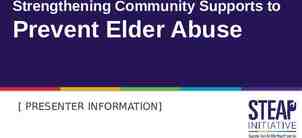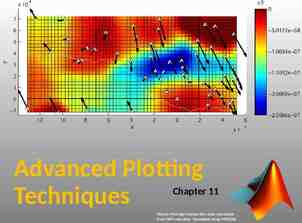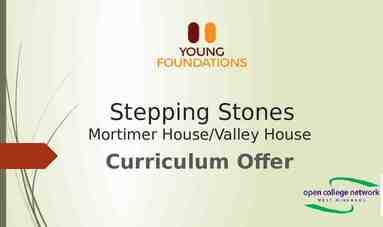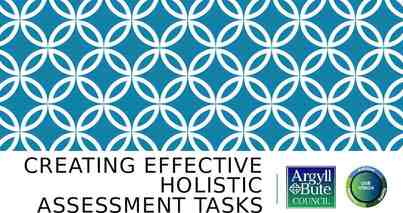Addiction Therapy-2014 Chicago, USA August 4 – 6, 2014 Martin Peters
21 Slides3.24 MB

Addiction Therapy-2014 Chicago, USA August 4 - 6, 2014 Martin Peters

INTEGRATED TREATMENT MODEL From Theory to Practice

By Martin Peters BA (Hons), Dip HE, DIP, RN Treatment Program Director - DARA Thailand

DIFFERENT MODELS OF ADDICTION TREATMENT Disease Model o The ‘disease model’ views substance addiction as a lifelong illness that requires complete abstinence Harm Reduction Model o Espouses the belief that people with previous alcohol problems can maintain minimal substance use and drink/drug socially in a controlled manner

CHANGES IN TREATMENT APPROACHES AND ATTITUDES Approaches to working with alcohol and drug abusing clients have changed drastically over the last thirty years Until the 1980’s the usual way of treating unmotivated or ambivalent clients was through confrontational methods, which included the intentional coordination of a crisis Such approaches are not common today as they relate to high drop out rates and poor outcomes

CHANGES IN TREATMENT APPROACHES AND ATTITUDES In line with recent evidence, researchers have advised alcohol and drug clinicians to adopt “a non-confrontational approach” o Motivational Interviewing, in a study was found to be more effective in addressing alcohol abuse than confrontational counseling (Miller, Benefield & Tonigan, 1993) Carl Rogers had proposed way back in 1951 that o Treatment approach that integrates an empathic client-centered counseling style (e.g. Rogers, 1951)

MOTIVATIONAL INTERVIEWING Miller & Rollnick explain that the “building blocks” of MI include ‘rolling with resistance’, giving feedback, removing barriers, providing choices, practicing empathy, clarifying goals and actively helping. Developing discrepancy and eliciting change talk are also important. Other principles include being positive and reassuring, avoiding pressuring tactics and supporting self-efficacy

CYCLE OF CHANGE PROGRESS Precontemplation Contemplation Preparation Action Maintenance RELAPSE

CYCLE OF CHANGE Several comprehensive studies or meta-analyses have proved the efficacy of MI o It indicated strong empirical support for its use in improving client participation in treatment and reducing alcohol or drug use (Burke, Arkowitz & Menchola, 2003; Noonan & Moyers, 1997)

COGNITIVE BEHAVIOR THERAPY Cognitive-behavioral therapy (CBT) was pioneered in the late 1950s as an alternative to psychodynamic therapy. It is a general term for a classification of therapies that emphasize the role of thinking in how we feel and what we do. There are a variety of approaches (e.g., Rational Emotive Behavior Therapy, Dialectic Behavioral Therapy) but most are based on the assumption that our thoughts cause our feelings and behaviors, not external things like people, situations, and events.

ABC-DF DIAGRAM Situation Thoughts Physical Reactions Moods/Feelings Behaviour

ABC-DF DIAGRAM A vast proportion of clients seeking treatment for alcohol or drug use also have mental health issues and psycho, emotional trauma. With such clients CBT was also found to be superior to MI and 12-step approaches However a challenge we experience that, it may not be feasible for all alcohol and drug clinicians to receive adequate training in order to utilize CBT with the level of expertise that would ensure positive results.

12 STEPS FACILITATION TSF Twelve Step Facilitation Therapy (TSF) is a brief, structured, and manual-driven approach to facilitating early recovery from alcohol abuse, alcoholism, and other drug abuse and addiction problems. The intervention is based on the behavioral, spiritual, and cognitive principles of 12-step fellowships such as Alcoholics Anonymous (AA) and Narcotics Anonymous (NA).

TSF Therapy focuses on two general goals: 1. 2. acceptance of the need for abstinence from alcohol and other drug use and surrender or the willingness to participate actively in 12-step fellowships as a means of sustaining sobriety.

NON MAINSTREAM ALTERNATIVE TREATMENT METHODS Mindfulness – Meditation, Yoga Physical Therapy Massage Acupuncture Recovery Related Activities – Regular Excursions outside facility

AN INTEGRATED APPROACH TO ADDICTION TREATMENT An integrated approach to working with clients is recommended that considers multiple contributing factors including emotional, biological, behavioural, cognitive, and social dimensions. Such ‘theoretical integrationism’ is the basis for the Integrated Treatment Approach by DARA. These syncretistic approaches seek to overcome the inadequacies and partiality of single theories through combining treatment methods from multiple modalities into a new coherent system.

INTEGRATED TREATMENT METHOD PRACTICE AND PRACTICAL IMPLICATION Work and development of an Integrated Treatment Method was started and soon implemented in DARA o Two Treatment Centers in Thailand Koh Chang “Integrated Behavioral Therapy ” – – – – – – – CBT Schema TA DBT TSF Yoga, Mindfulness PT, Massage Therapy, Acupuncture

INTEGRATED TREATMENT METHOD PRACTICE AND PRACTICAL IMPLICATION Chathaburi “Steps to Recovery ” – – – – – CBT TA TSF Yoga, Mindfulness PT, Massage Therapy, Acupuncture 3 years providing interventions on ITM in both center. o o Higher Completion Rates Scale of satisfaction from clients has been consistently high

INTEGRATED TREATMENT METHOD PRACTICE AND PRACTICAL IMPLICATION In the recent 12 month period from June 2013 to June 2014, 350 Clients received treatment of this model o 90% Discharge as Successful Completion of Treatment. With a lean stay of 28 days. Average is 60 Days in treatment. o o 8% Discharge due to; Against Clinical Advice, Incomplete Treatment 2% Discharge to either Administrative Discharge ie transfer to another level of care/facility or NonCompliance.

CREDITS (Washton & Zweben, 2006) (Valliant, 1996, cited Emmenkamp & Vedel, 2006) (Bratter, 1975, cited in Glidden-Tracey, 2005; Johnson, 1973 (Miller & Rollnick, 2002) (Hilarski, 2005, p.2) (Miller & Rollnick, 2002; Washton & Zweben, 2006). (Miller, Benefield & Tonigan, 1993; Project MATCH, 1997; Stephens, Roffman & Curtin, 2000) (Fisher & Bently, 1996; Jerrell & Ridgely, 1995).

THANK YOU For inquiries about this presentation or our programs, please email me at [email protected] To learn more about DARA Thailand, please visit www.dararehab.com






